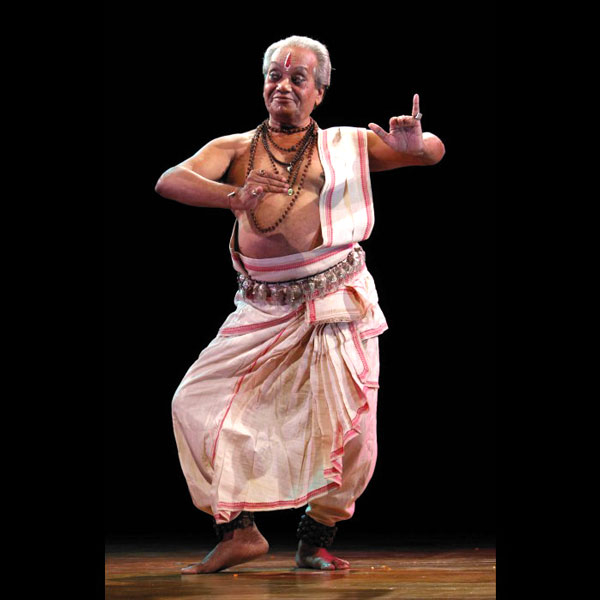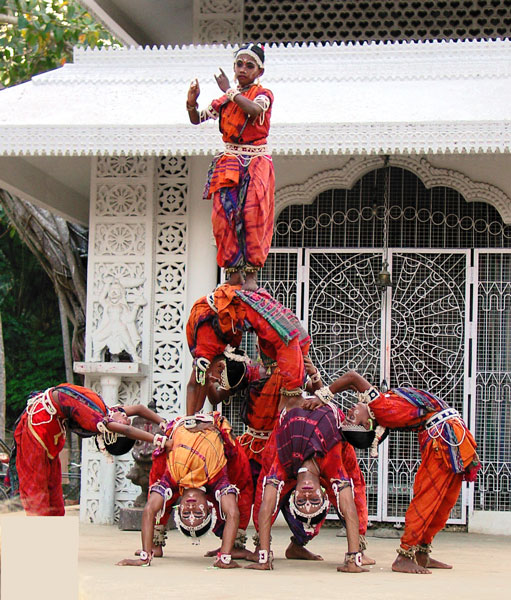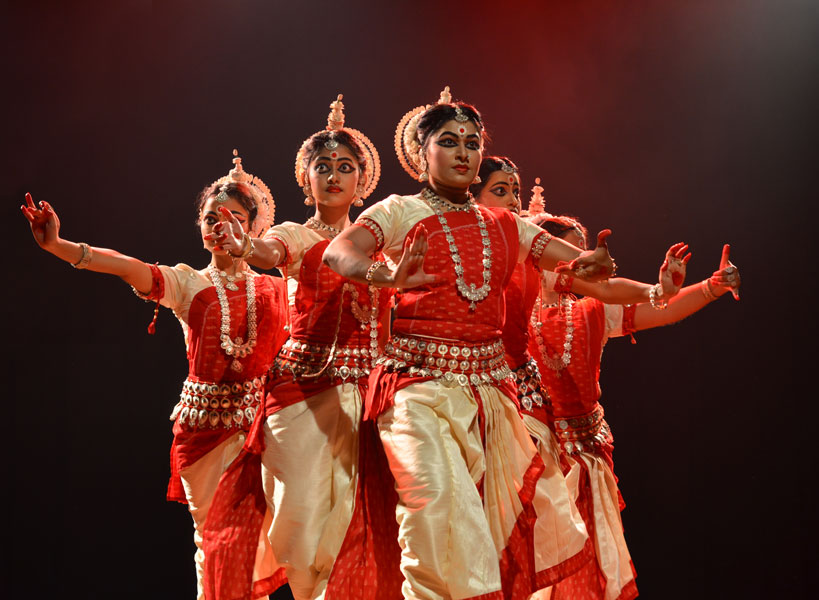Odissi — Poetry in motion
There are two distinct languages — the verbal which separates people, and the visual that is understood by everybody”. These words of Yaakov Agam best describe all performing arts and are true of Indian classical dance that have survived for centuries by communicating through visual medium transcending linguistic barriers.
Odissi is a classical dance style that originated in the temples of Odisha and was performed mostly by female dancers. This graceful dance with movements that resemble the undulating waves of the sea has attracted dancers from across the world transcending cultural and religious borders. Several artists of various nationalities have come to Odisha to imbibe training from renowned gurus and have taken up Odissi dance as a full-time profession. Sharon Lowen from the US, Ileana Citaristi from Italy, Masaka Ono from Japan and Ramli Ibrahim from Malaysia are professional artistes who perform and propagate this rich tradition. When asked to share his experience, Ramli Ibrahim says, “When I dance, I am like a receptacle overflowing with rasa, like an incandescent vulnerable firefly, pure and bright. This pure intense fire is the most sacred part of myself. It is the point of time when I celebrate life with my total being.” He comes from a relatively strict Muslim background and in the 80’s and 90’s Malaysia was undergoing a global tsunami of fundamentalist religious sentiment. “However, I survived and when I became successful, the acceptance was easier and rather seamless.”
Historical evidence in the temple carvings of Bhubaneswar, Konarak and Puri proves that Odissi has been in existence for a very long time. The Manchapuri caves in Udayagiri show carvings of dancers and musicians that date back to the time of Jain king Kharavela in the first or second century BCE. The Buddhist, Jain and Hindu archaeological sites and the caves and temples at Lalitgiri, Ratnagiri and Alatgiri show inscriptions and carvings of dances dating to the sixth to ninth century CE. The sculpturesque poses in the bas relief in temples reveal the inherent grace and beauty of the dance.

Odissi dance used to consist of three schools, Mahari, Nartaki and Gotipua. Mahari was performed by Oriya dancers or devadasis known as Maharis. The name was derived from Maha Nari, which means the great woman and mahri, the chosen one. They used to perform devotional dances within the temple precincts. Later they started including more sensuous dances like the Gita Govinda by Jayadeva in their repertoire. When the dance was performed in the royal courts it was known as Nartaki dance. Gotipuas were young male dancers who dressed as girls and performed in dance dramas at temple festivals and fairs. They commenced training from a tender age when their bodies are supple and added acrobatics, athletics, martial arts and folk elements to the dance.
The present day Odissi has been greatly influenced by the gotipua tradition and is a harmonious amalgam of tandava (masculine) and lasya (feminine) aspects. Many renowned gurus of Odissi started as gotipuas in their youth. Kelucharan Mohapatra, Gangadhar Pradhan, Pankaj Charan Das, Deba Prasad Das and Raghunath Dutta were the four major gurus who revived Odissi in the late forties and early fifties. Kelucharan Mohapatra was a consummate dancer who portrayed the intrinsic beauty of Odissi through intense emotions and infinite grace. His noted disciple Sanjukta Panigrahi was the foremost female exponent, who, along with her musician-husband Raghunath Panigrahi, popularised Odissi in India and abroad.
Odissi can be easily distinguished by its distinctive fluid, graceful and sensual movements. The basic dance motifs are called the bhangas where the lower (feet), mid (torso) and upper (hand and head) body are symmetrically coordinated with facial expression and performed to musical accompaniment. These are made up of eight belis, or body positions and movements, combined in many varieties. The three primary dance positions are samabhanga — the square position; abhanga — where the body shifts from side to side with the hip extending sideways; and the tribhanga —
an S-shaped three-fold bending of body, with the torso deflecting in one direction and the head and hips in the opposite. It is the most distinctive posture in Odissi, along with the chouka, which is a square-like stance depicting Lord Jagannatha, the presiding deity of the Jagannath temple at Puri. When these movements flow together, the dance becomes the epitome of immaculate grace.

The dance costumes are in vibrant colours made of woven local silk (pattasari) with traditional motifs along with elaborate silver ornaments. The performance repertoire includes invocation, nritta (pure dance), nritya (expressive dance), natya (dance drama) and moksha (attainment of salvation). The nritta is abstract, fast, and the emphasis is on form, speed, range and pattern. The nritya is expressive and communicates feelings through a storyline. The natyam is a play, typically a team performance, but can also be acted out by a solo performer. The moksha is the climax soaring into the realm of pure aesthetics that aims to highlight the liberation of soul and serenity in the spiritual. Odissi dance music evolved from the ritualistic music of the Jagannath temple of Puri, and the 12th century saint-poet Jayadeva was a prominent practitioner of it. It has a codified grammar and a distinct lyrical rendition style with wave-like ornamentation. Odissi has been included in the syllabus of the Indian Institute of Technology, Bhubaneswar’s B Tech course since 2015.
A traditional Odissi performance commences with an invocatory mangalacharan — a threefold salutation to God, the guru(teacher) and the audience. It is followed by a fast-paced batu. Next is the pallavi which begins with slow graceful movements starting with the eyes and extending to the rest of the body as it builds up in tempo and rises to a crescendo. Then comes the abhinaya which is an enactment of a song or poem through emotions and expressions. It is usually performed to Sanskrit songs like the Ashtapadis, or to Oriya songs. Nrithya is usually followed by natya which is an enactment of stories from mythology with multiple characters. The performance concludes with the moksha.
I was fortunate to glean a closer understanding of the significance of Odissi when I learnt it briefly from the late Ramani Ranjan Jena in 1974. My learning was unfortunately short-lived since he left Chennai soon after but even the brief impact was profound. There is a sense of immense pride when dancers from all over the world come to India to learn Odissi and take it beyond, making it truly universal. As Ramli Ibrahim says, “Myths which are abundantly used in Indian dances are thematically timeless but how you transform these into universal metaphors and symbols is the challenge.” Culture and art are empowering agents which contribute positively to the understanding of our complex nature. They make us civilised. “For an artist, the more you give yourself and your art to others, the more you discover your ‘reason of being’. This is the ultimate enriching learning experience of my ‘pathless’ artistic journey.”

